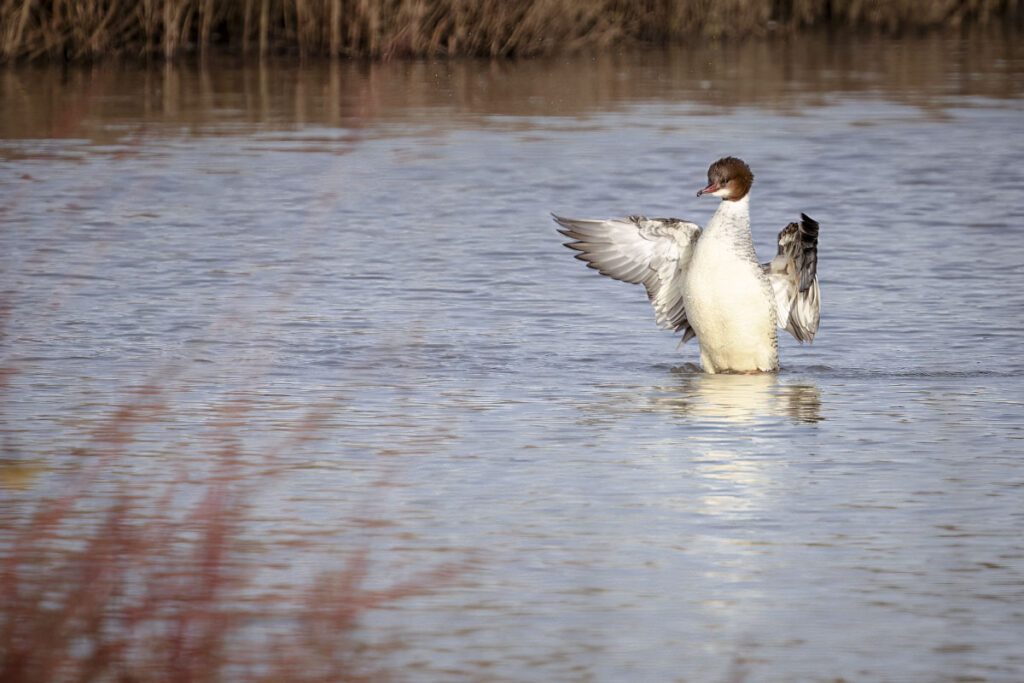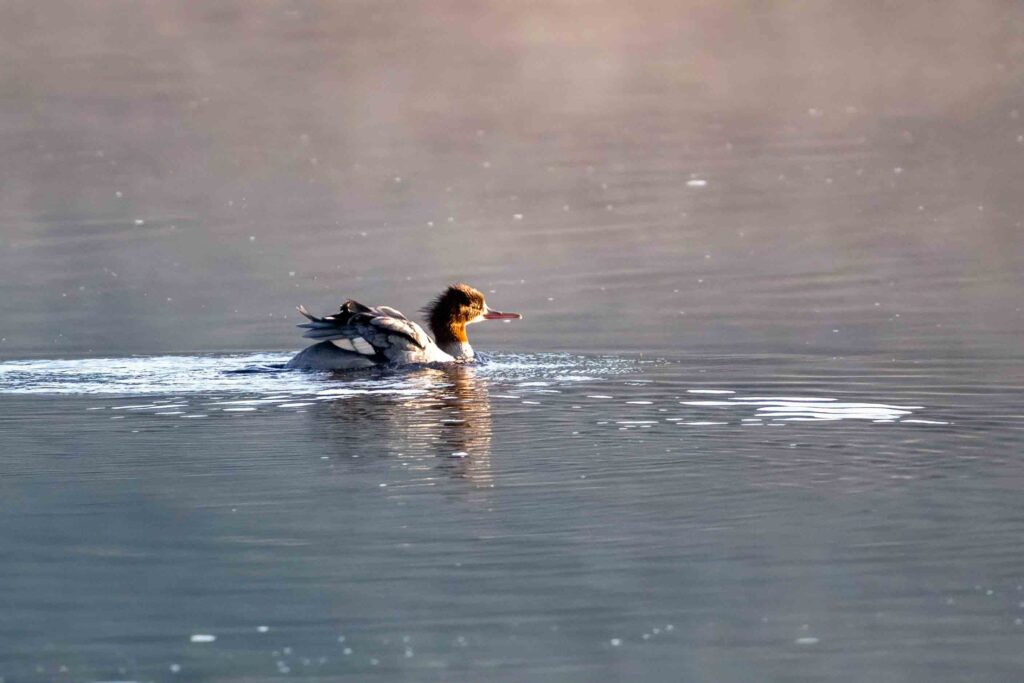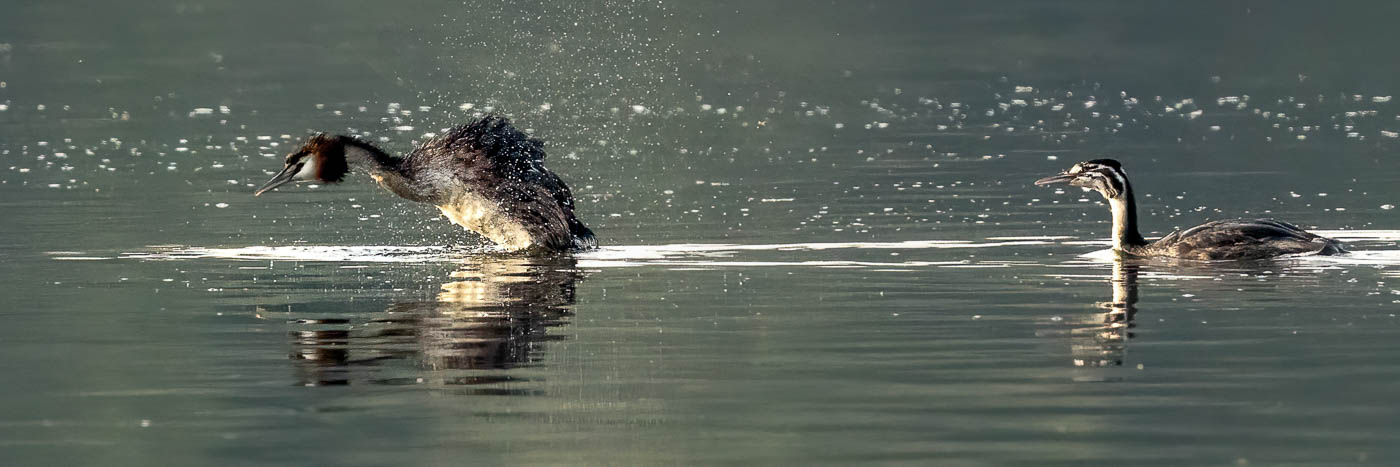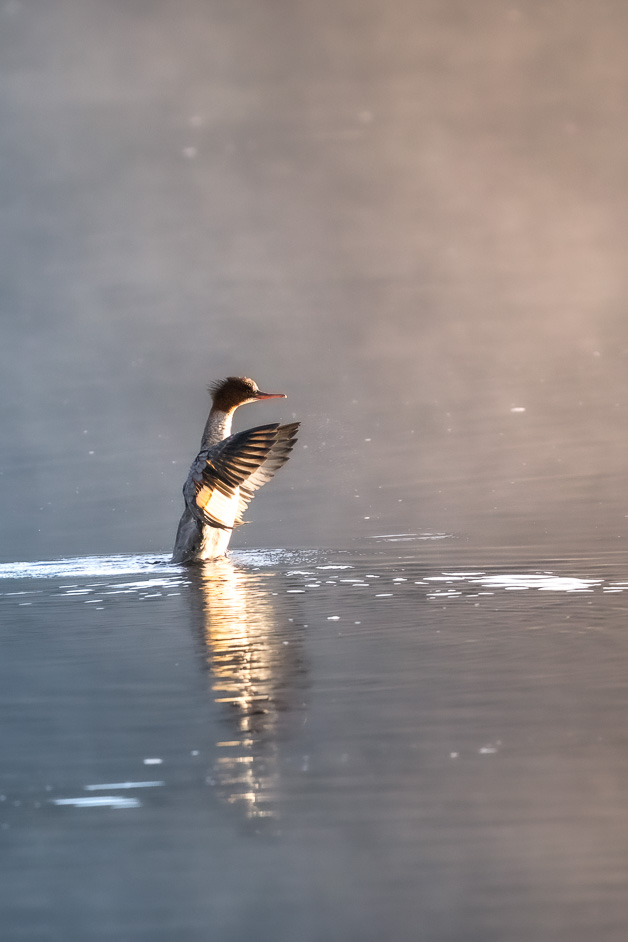
The Goosander — also known as the Common Merganser — is one of those striking water birds that immediately grabs attention. I remember the first time I added one to my lifer photo album: the bird was distant, the shot was shaky, but it was evidence! That encounter quickly sent me down a rabbit hole of learning more about this fascinating species.
First Impressions
My first “record shot” was of a male with a dark green head, but it was the female that lingered and posed with a quick wing stretch — chestnut-headed with that windswept, spiky crest that makes her look effortlessly stylish. The more I’ve watched Goosanders, the more I’ve realised they’re full of character.
Fun Fact About the Name
When I first saw one, I mistakenly called it a “Merganser.” I wasn’t entirely wrong — the Goosander is a type of merganser! Its scientific name, Mergus merganser, comes from the Latin mergus (a waterbird) and anser (goose). In the UK, “Goosander” is the common name, while in North America, they’re referred to as the Common Merganser.
How to Identify a Goosander
It’s easy to confuse them with the Red-breasted Merganser (RBM). A key difference:
- Goosander – crisp contrast between the chestnut head and clean white breast.
- RBM – slimmer build, spikier crest, and more blended tones running from head to breast.
I learned this lesson first-hand: at sunrise in Fort William 2025, I thought I’d taken another Goosander shot. When I looked closer, it turned out to be a Red-breasted Merganser — a right result, because it meant two different mergansers for the lifer album!

Habitat & Behaviour
Goosanders prefer freshwater rivers and lakes — which is why they’re often seen inland in the UK — while Red-breasted Mergansers lean towards coastal areas. Both are fish specialists, but Goosanders tend to go after slightly larger prey.
They’re excellent divers, capable of staying under for around 30 seconds, using their strong webbed feet (not their wings) to power through the water.
Nesting Habits
Unlike grebes, which build floating nests, Goosanders nest in trees or nest boxes close to water. The ducklings leap from the nest just a day or two after hatching.
Conservation & Perception
While many birders love them, Goosanders aren’t always popular with anglers because of their fish-hunting skills. In some areas, there have even been calls for them to be included on hunting licenses.
Goosanders in the Merganser Family
They belong to a fascinating family that includes:
- Common Merganser (Goosander) ✅
- Red-breasted Merganser ✅
- Hooded Merganser (North America)
- Smew
- Brazilian Merganser (critically endangered)
- Scaly-sided Merganser (endangered, Russia and China)
For my lifer album, that’s now two ticks: first the Goosander, then the Red-breasted Merganser. One day I’d love to photograph all six.
Final Thoughts
Bird photography has taught me that sometimes a blurry record shot is just the beginning. Over time, I’ll keep returning, hoping for that dream photo: perhaps a Goosander diving, or a Red-breasted surfacing with a fish in its bill. Until then, each encounter — whether it’s a quick glimpse or a golden-hour surprise — is a reminder of how much there is to learn and appreciate.
Have you seen a Goosander or a Red-breasted Merganser before? Do you have a favourite diving bird? Share your stories in the comments.
Happy birding,
Kate


